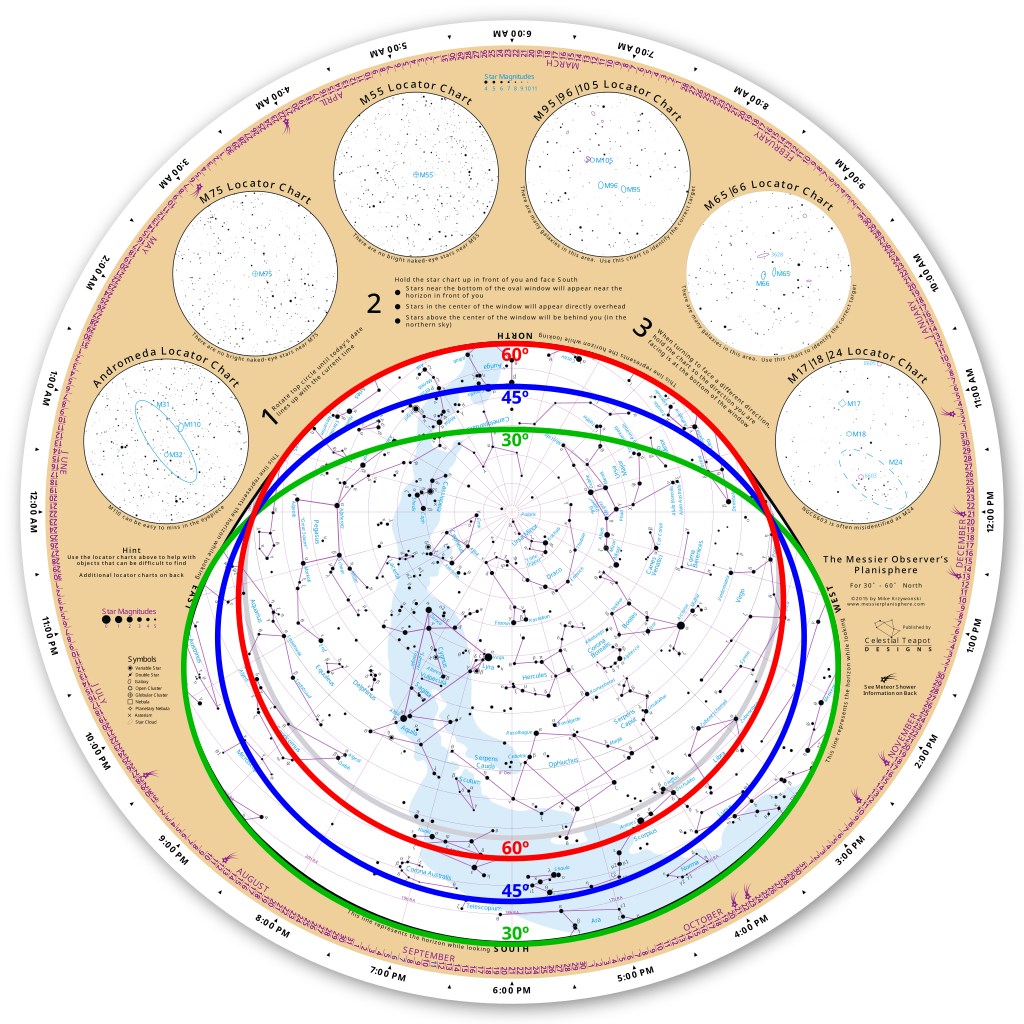Latitudes

For Use Between 30 - 60 Degrees North Latitude
The Messier Observer’s Planisphere was designed for observers in the northern hemisphere between 30 degrees and 60 degrees of latitude. If you are using the planisphere at a location that is further north or south, it will not give an accurate representation of which stars are above or below the horizon at a given date and time. In fact, for observers located south of 30ºN, there will be some stars visible in the sky that are not even printed on the map!
The diagram above shows the actual horizon for observers at 30º, 45º, and 60º north latitude. After looking at it for a minute, you may have discovered why the horizon window on the Messier Observer’s Planisphere is not a perfect circle or ellipse as it may be on some other planispheres. The pear-shaped window does the best job of representing the horizon for all observers located between 30 and 60 degree north. You may also have realized that accommodating observers from a range of different latitudes means that a few stars will be shown near the edge of the chart that are actually below either the northern or southern horizon at your particular location. In practice, this is not a significant problem. Few observers have a perfect horizon with no obstructions such as trees, buildings, or mountains. Your brain can easily adjust for stars you see on the map that are hidden below the horizon when you look up from the planisphere to the sky. I have included this information here mainly for the more curious among us.